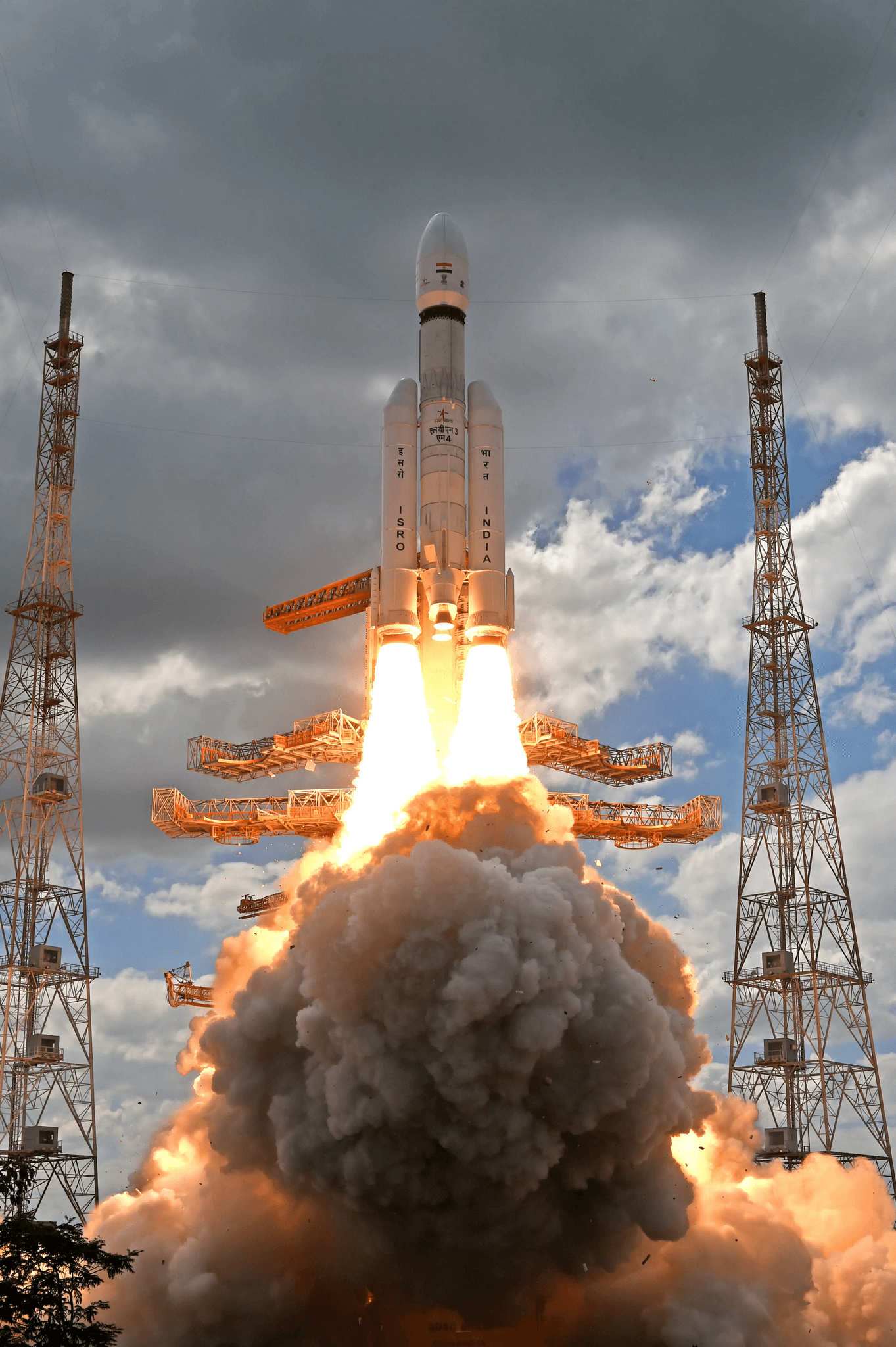Image above shows LVM3 M4 lifting off from SDSC SLP, carrying Chandrayaan-3 (Credit : Wiki)
When I was growing up, the only acceptable choices for a science student were to become a doctor or an engineer. (Through the ether, I can feel many Indian readers nodding in agreement.) I had no guidance and somehow I had my mind fixed on doing B.Sc. in Physics. Looking back, I feel that I could have chosen humanities or commerce because today, I find many topics in those areas interesting. Proper guidance is supremely important for students who are trying to find the right path.
Imagine a young Indian girl whose Mom allows her to use her iPad for an hour or so. She mainly uses it to watch cartoon videos. One day, the kid accidentally clicks on a video that is showing a live telecast of a satellite launch by the Indian Space Research Organization or ISRO.
The girl has never seen a satellite launch before. She watches the rocket go into space and is mesmerized. Then she starts asking questions about it to her parents or teachers and hopefully they answer her doubts and encourage her to find out more about the topic. Perhaps, the girl grows up to become a rocket scientist or an astrophysicist.
As we know, on 23rd August 2023, Chandrayaan-3’s Vikram Lander made a successful landing at the Shiva Shakti point on the Moon South Pole, a feat that had never been achieved. The fact that this mission cost only $74 million demonstrates India’s unique cost effective approach. India is only the fourth country to achieve a successful landing on the Moon. PM Modi Ji announced 23rd August as National Space Day to commemorate the occasion and as a tribute to scientists and engineers who made this possible through their hard work. I think it’s a great initiative to instill curiosity in young children about the space research. And for students about to finish studies, it will be a great occasion to know more about the career paths available in space research.
I was watching the live Instagram session of ISRO chairman Dr. S. Somnath Ji and one could see the immense interest and curiosity of the audience that was reflected in questions on a wide variety of topics, ranging from using hydrogen fuel for rockets to latest updates on Gaganyaan.
There is a difference between normal research institutes and ISRO that is often goes unnoticed. In any other research institute, if a project does not meet its goals, it gets mentioned in the reports sent to the funding committee but the general public rarely gets to know about it. The nature of ISRO projects is such that they have to do their experiments open to the public, so everyone gets to see the results. ISRO scientists are always working under intense pressures, much more than scientists in other fields.
The National Space Day is also an occasion to celebrate the various milestones achieved by the ISRO scientists under the leadership of Chairman Dr. S. Somnath Ji. The list of successful projects by ISRO is impressive and ever expanding. Recently, ISRO demonstrated successful landing of Reusable Launch Vehicle (RLV-TD) that is designed to take satellites to space and return, landing on a runway like an airplane.
ISRO’s future missions include the Gaganyaan Mission, that will be a demonstration of human space flight capability by launching crew of 3 members to an orbit of 400 km for a 3 day mission and bring them back safely to earth. By 2035, India will have its own space station. By 2040, ISRO is also planning to land Indian astronauts on the Moon, using rockets made in India.
Space technology is now an important part of our daily lives, from weather forecasting to every kind of telecommunications. From the beginning, one of ISRO’s main objectives has been to design missions that would be useful for various infrastructures in the country. The INSAT series satellites were invaluable in weather forecasting.
A unique aspect of the space research in today’s India is an active participation by the private sector. With nearly 300 space startups in 2024, the field is dynamic as never before with new ideas and applications that are unique to India’s needs. In the next ten years, India’s space economy is expected to increase upto $44 billion. Currently, it is at $8 billion.
The first National Space Day will have seminars, competitions, exhibitions all over the country. It’s a great opportunity for students to get to know the details of the Indian space program and the milestones it has achieved over decades.
India’s future in the space domain has never been more dynamic and more vibrant.



